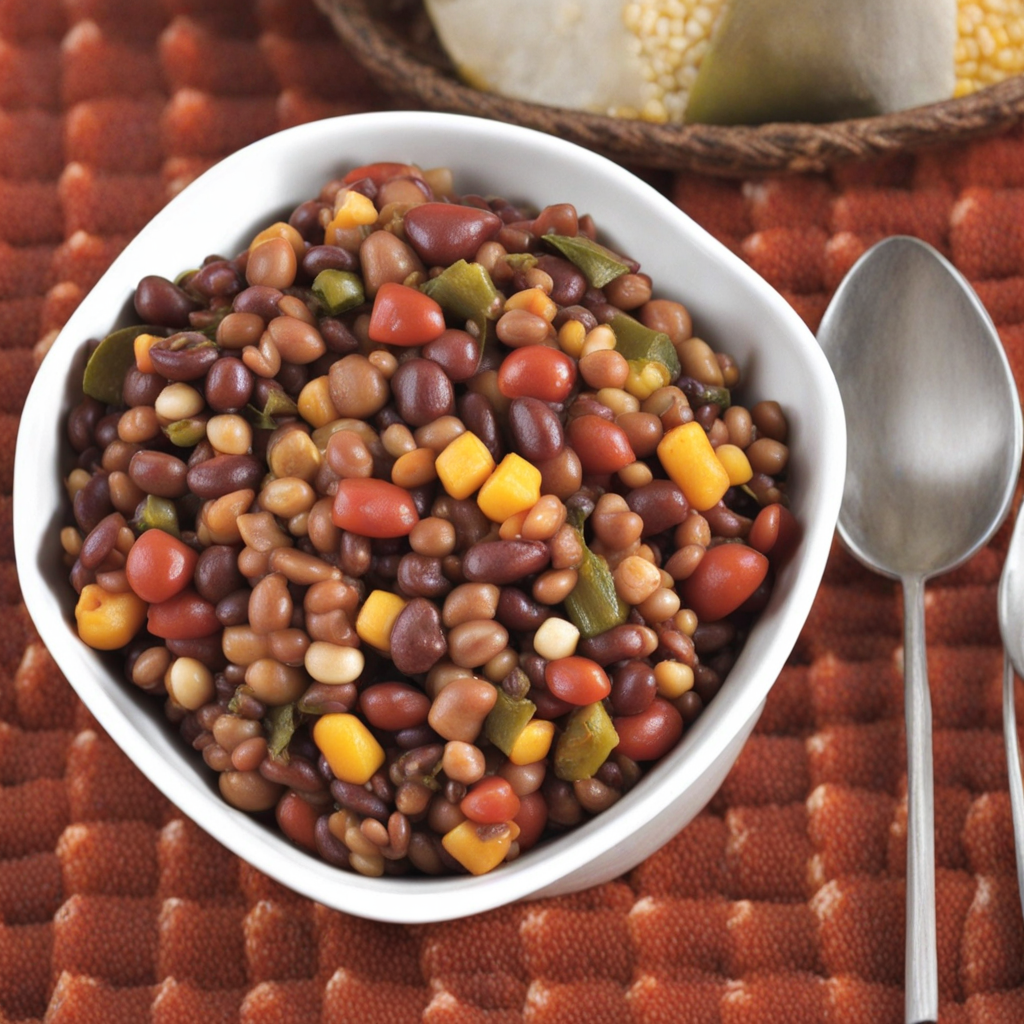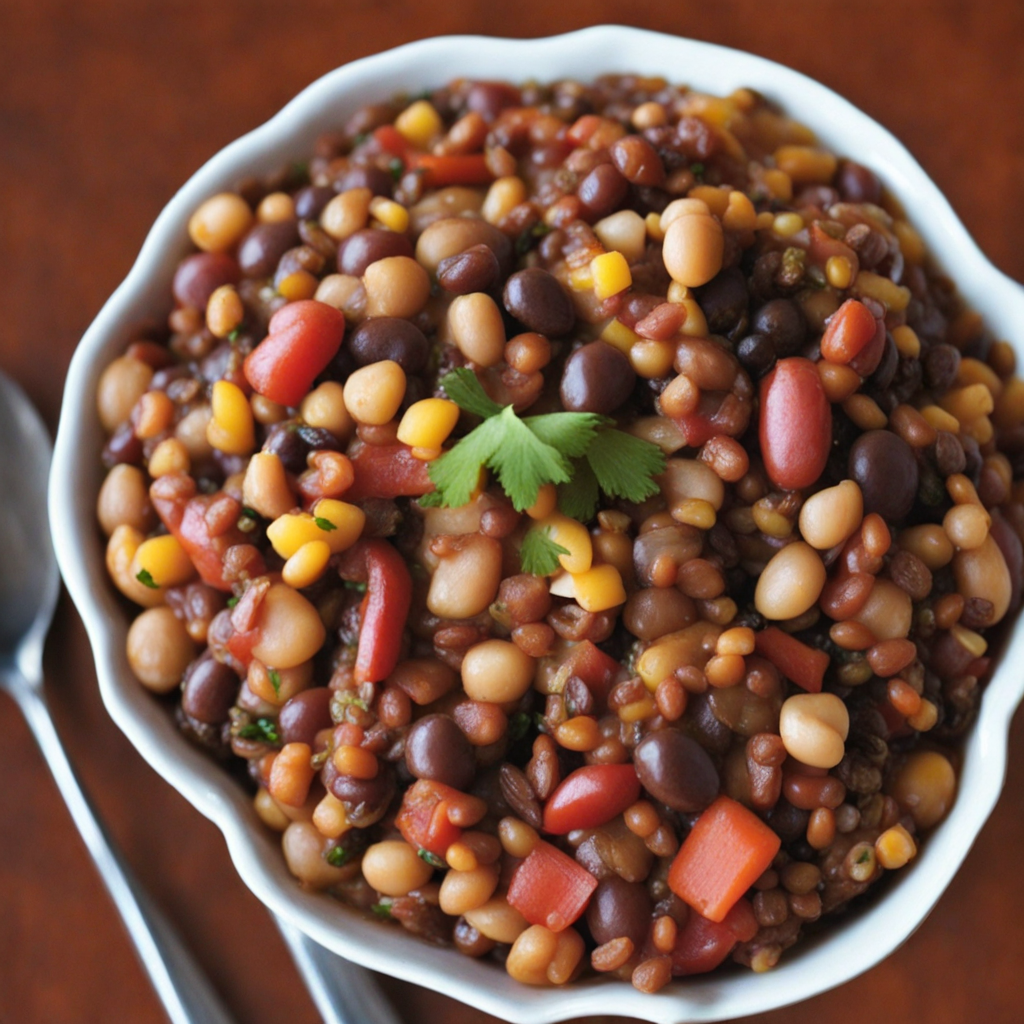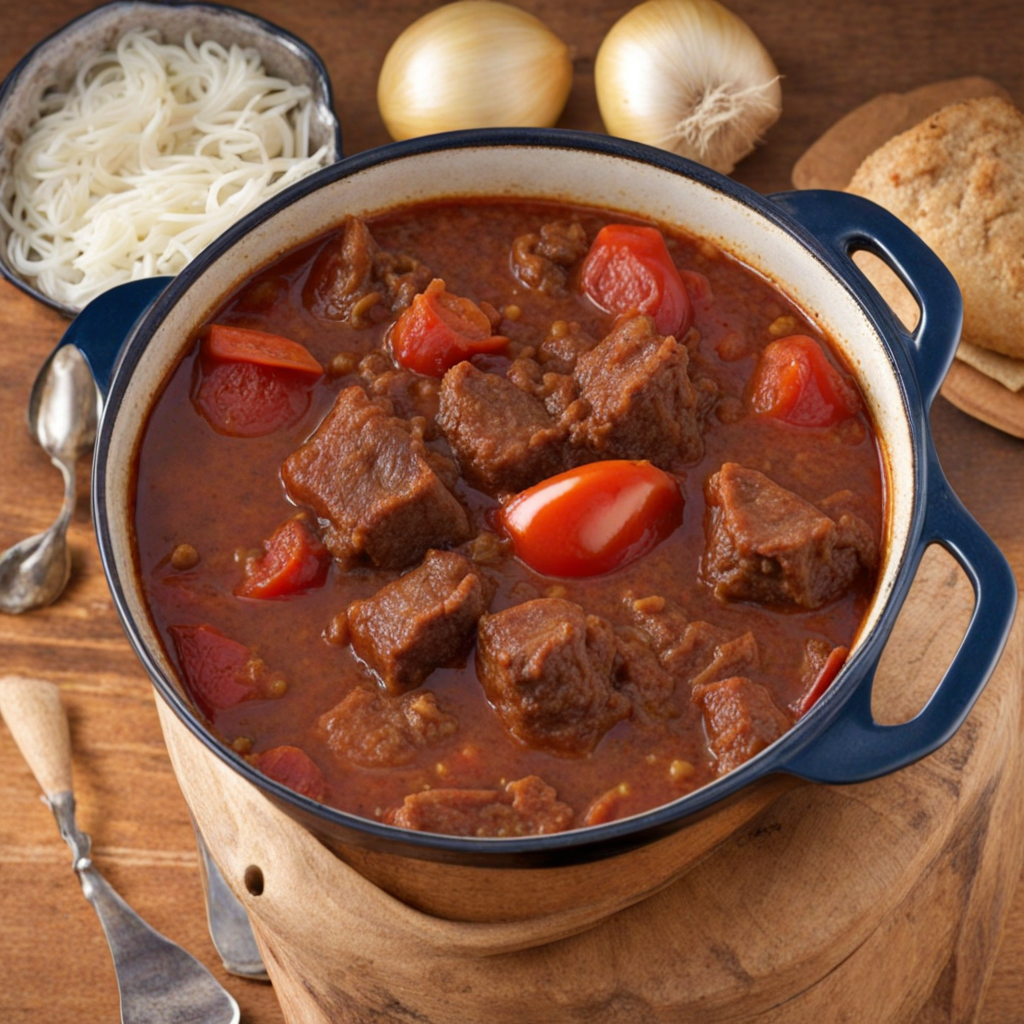Githeri
Githeri is a traditional Kenyan dish that showcases the country's rich agricultural heritage. At its core, githeri is a hearty combination of maize (corn) and beans, often enhanced with a variety of vegetables such as carrots, potatoes, and green leafy greens. The dish is typically simmered until the ingredients meld together, creating a comforting, wholesome meal that is both filling and nutritious. The natural sweetness of the maize pairs beautifully with the earthy flavors of the beans, resulting in a delightful balance of taste and texture. What sets githeri apart is its versatility; it can be customized with various spices and seasonings to cater to different palates. Some recipes may include ingredients like onions, garlic, and tomatoes, while others might incorporate spices like cumin or chili for an added kick. Additionally, githeri can be served as a standalone dish or accompanied by meats, such as beef or chicken, making it suitable for any occasion. This adaptability allows each cook to put their unique spin on the dish, ensuring that githeri is never the same twice. In Kenya, githeri is more than just food; it is a symbol of communal sharing and togetherness. Often prepared in large quantities, it is commonly served at family gatherings, celebrations, and community events, bringing people together to enjoy a delicious meal. The nourishing properties of githeri also speak to its historical importance, as it has been a staple food for many Kenyans, providing sustenance and energy for both daily labor and social festivities. Whether enjoyed at home or at a local eatery, githeri offers a true taste of Kenyan culture and hospitality.
How It Became This Dish
Githeri is a traditional Kenyan dish that embodies the rich cultural heritage and agricultural diversity of the country. Originating from the Kikuyu community, one of the largest ethnic groups in Kenya, githeri dates back to the pre-colonial era. The dish primarily consists of a mixture of maize and beans, both staple foods in Kenya, which were cultivated in the fertile highlands of Central Kenya. The name "githeri" is derived from the Kikuyu language, where it refers to the process of mixing various ingredients. Traditionally, githeri was prepared by combining the two main ingredients with water and cooking them in a pot over an open fire. This simple yet nourishing meal served as a significant source of sustenance for families, especially during times of scarcity. The introduction of new ingredients such as potatoes, carrots, and greens over time has added depth to the dish, allowing it to evolve while retaining its fundamental character. Cultural significance is deeply intertwined with githeri. It is often regarded as a symbol of unity and community, particularly during communal gatherings and celebrations. Githeri has historically been served at important events, such as weddings, funerals, and feasts, reflecting its role in social cohesion among the Kikuyu and other communities in Kenya. The dish is not just a meal; it represents a shared experience and a connection to one’s roots. As Kenya transitioned through various historical phases—including colonial rule and post-independence—githeri maintained its relevance in the national cuisine. During the colonial period, the British colonial administration introduced new agricultural practices and crops, altering the landscape of Kenyan food. However, githeri remained a staple, often prepared in households as a practical and economical meal. Its simplicity made it accessible, allowing families to adapt it based on available resources. In the post-independence era, githeri began to gain recognition beyond its traditional roots. The dish was embraced by various communities across the nation, evolving into a symbol of Kenyan identity. In urban areas, githeri became a popular street food, served in small eateries and food stalls. This urban adaptation often includes additional spices and ingredients, resulting in a more robust flavor profile that appeals to a wider audience. The development of githeri over time has also been influenced by globalization and the fusion of culinary traditions. As Kenyans traveled abroad and interacted with diverse cultures, they brought back new cooking techniques and flavor combinations. This cross-pollination of ideas has led to creative variations of githeri, such as githeri with meat or githeri burritos, showcasing the dish's adaptability and enduring appeal. In contemporary Kenya, githeri continues to hold a significant place in both domestic and culinary tourism contexts. It is often featured in Kenyan restaurants and is a must-try dish for visitors seeking an authentic dining experience. The rise of social media has also contributed to the revival and popularization of traditional recipes, with many Kenyans sharing their githeri preparations online, thus fostering a sense of pride in their culinary heritage. Moreover, githeri holds nutritional importance. The combination of maize and beans provides a complete protein source, making it an ideal meal for both children and adults. As health consciousness grows among Kenyans, githeri's status as a nutritious and wholesome dish has garnered renewed interest. Many families emphasize its health benefits, particularly in terms of providing energy and supporting growth and development. Regional variations of githeri exist, reflecting the diverse cultures and ingredients found throughout Kenya. For instance, in the coastal region, githeri might be prepared with coconut milk and spices, introducing a tropical twist to the dish. In contrast, communities in the northern regions may incorporate local vegetables and meats, showcasing the ingredient diversity that characterizes the Kenyan culinary landscape. As githeri continues to evolve, it embraces modern culinary trends while remaining rooted in tradition. Chefs are experimenting with gourmet versions, adding unique spices, herbs, and cooking techniques that elevate the humble dish to new heights. This culinary innovation highlights the dish's versatility and its capacity to adapt to changing tastes and lifestyles while honoring its historical roots. In schools, githeri is often served in lunch programs as a means of providing nutritious meals to children. This practice not only supports children's health but also instills an appreciation for traditional foods in the younger generation. Efforts to integrate githeri into school meal programs underscore its importance as a cultural and nutritional staple in Kenya. The story of githeri is not just about food; it is a narrative that captures the essence of Kenyan identity, resilience, and community spirit. As Kenyans continue to cherish and celebrate this dish, githeri remains a testament to the country's agricultural bounty and culinary innovation. Its journey from a traditional Kikuyu meal to a national favorite reflects the dynamic interplay between culture, history, and gastronomy that defines Kenya. In conclusion, githeri is more than just a dish; it is a cultural emblem that symbolizes the heart and soul of Kenyan cuisine. Its rich history, diverse adaptations, and nutritional value make it a cherished part of Kenyan life, weaving together the past and present in a delicious and meaningful way.
You may like
Discover local flavors from Kenya






